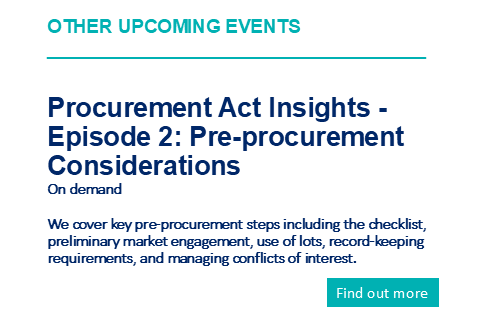- Details
The Golden Thread of information unravelled: navigating the Golden Thread Guidance for Higher-Risk Buildings
Steve Gummer and Shyann Sheehy talk through the recent Construction Leadership Council guidance on a ‘Golden Thread’ of information as part of a new regulatory regime for Higher-Risk Buildings.
The Building Safety Act 2022 (“BSA 2022”) together with subsequent secondary legislation, introduced a new regulatory regime for Higher-Risk Buildings (“HRB”) in England. Part of the new regime is a requirement for a ‘Golden Thread’ of information.
On 27 August 2024, the Construction Leadership Council (“CLC”) published “Delivering the Golden Thread: Guidance for dutyholders and accountable persons” (the “Guidance”), which sets out further detail on its purpose, and practical steps for compliance. The Guidance is divided into three main sections: summary of the fundamentals of the Golden Thread; the Golden Thread requirements during the design and construction phase; and the Golden Thread requirements during the occupation phase.
The Guidance is intended to be a dynamic document, in that CLC is encouraging feedback on it. We explore below the Guidance related to the design and construction phase of an HRB.
A full copy of the Guidance can be downloaded here.
What is the Golden Thread and what is its purpose?
The BSA [1] places a legal duty on dutyholders and accountable persons to keep and maintain the Golden Thread. It is a digital record of the HRB which is to be maintained throughout the building lifecycle.
At its core, the aim of the Golden Thread is to help ensure that building safety risks are being managed for the safety of those living and using the HRB. It is intended to deliver “accurate information about the building to those that need it and to support those people to use that information to comply with building regulations (in design and construction) and managing spread of fire and structural risk (in occupation)” [2].
What Golden Thread information is needed at the design and construction phase of an HRB?
The requirement to create and maintain a Golden Thread of information extends to works creating a new HRB (this includes building a new or changing the use of an existing building in order that it becomes an HRB), as well as works to an existing HRB.
Those responsible for creating, updating and maintaining the Golden Thread during this phase includes the appointed dutyholders under the Building Regulations being – client, principal contractor and principal designer.
The client dutyholder is responsible for providing the electronic facility for storing the Golden Thread and the procedures that allow access and maintenance of it.
Even before work starts, the Golden Thread must contain information that can demonstrate that the HRB, when built, will satisfy the functional requirements of Building Regulations and that the building work will be managed to ensure it meets the design.
The information to be stored on the Golden Thread forms part of the ‘accompanying documents’ needed for building control Gateway Two approval. These specific documents are set out in the Building (Higher-Risk Buildings Procedures) (England) Regulations 2023 and includes:
- Competence declaration – dutyholders must be competent in the area they are responsible for, and this declaration should be signed by the client “to demonstrate these duties have been discharged and compliance with the relevant Regulations” [3]. Ensuring compliance with the building regulations dutyholder duties includes reviewing relevant past conduct of proposed dutyholders, whilst also keeping a written record of the steps taken to ensure compliance.
- Construction control plan – The Guidance sets out that this should be a “practical and useful document describing working arrangements for a principal contractor and all other contractors to follow.” [4] Schedule 1 of the Building (Higher-Risk Buildings Procedures) (England) Regulations 2023 sets out in further detail the information that needs to be included, but the Guidance notes that “The client and their teams must ensure that they have suitable mechanisms set up to manage compliance throughout the construction process” [5]. The intent is to ensure that the design approved at Gateway Two is maintained and adhered to throughout the construction phase.
- Change control plan – This plan is to enable any changes made to the documents approved at Gateway Two to be documented and logged. This “must set out the strategies, policies and procedures the client has adopted to ensure any controlled change is recorded and notified as required by regulations” [6]. It is for the client to ensure that the requisite policies and procedures are established to ensure the effective management of those changes and will need to be set out in this plan.
- Building regulations compliance statement – This “must set out the approach taken in designing the proposed work and the building standards applied”. [7] The Guidance makes it clear that the statement will need to include details on the approach taken in designing the proposed work and the building standards applied and the reasons for adopting the approach taken, together with an explanation of why the approach is appropriate and ensures compliance with all applicable requirements of the building regulations. It will, therefore, not be enough to just state that compliance is achieved without at least signposting to relevant documents to help evidence compliance.
- Fire and emergency file – this should ensure “that the strategies for managing building safety risks, once the building is completed, have been considered from the early design stages. The fire safety strategy and structural design should be clear and explained as independent parts of the overall design”[8]. This document is expected to provide further detail which enables “clarity about the assumptions which underpin those strategies”. The expectation is that this is to be a comprehensive and cohesive document enabling anyone involved in the HRB to understand the approach taken on fire safety and systems and the Guidance points towards the following British Standards to assist including BS9991 [9], BS9792 [10], BS EN ISO 31000 [11] and BS 8644-1 [12]
- Mandatory occurrence reporting plan -This sets out how safety occurrences (i.e. something which if not remedied, could cause serious harm to people when the building is in use – e.g. structural failure of the building or spread of fire or smoke in the building) are to be managed and reported. The Guidance states that the client “must ensure that a mechanism to allow for safety occurrences to be reported by relevant persons in the design and construction teams is set up and that everyone is briefed not only on how the reporting mechanism is to be used but on the mandatory requirement for them to do so” [13]. It is expected that the information generated by this reporting requirement will enable “lessons to be learned by the wider industry and government” [14].
- If relevant the partial completion strategy that should “set out a planned approach for completing the construction, remediation, or safety improvement works on a HRB [15]” while work continues to the HRB.
During construction works, the Guidance has made it clear that “Sufficient evidence must be captured during construction to show: how the building work conforms to the design that was approved, including any approved changes; and how the building satisfies all the applicable functional requirements of the building regulations” [16]. The Golden Thread is therefore an evolving repository of information on that HRB and the dutyholders need to work together to ensure that record keeping is accurate and up to date.
Upon completion of the construction phase, these documents will also form part of the application for completion certificate Gateway Three approval to the BSR.
Once Gateway Three approval has been obtained the HRB can be occupied and the Golden Thread will be passed to the accountable person/principal accountable person to manage.
Implications of the Guidance for the Construction Industry
This Guidance will likely become a cornerstone document that will help shape the form and structure of the Golden Thread information.
a. Construction Contracts – JCT 2024
Following the on-going release of the JCT 2024 suite of contracts it will be a watching brief to see how the industry responds to the Guidance and the new clause 2.26.8 as set out in JCT Design & Build form (and also mirrored in some of the other JCT 2024 standard forms).Clause 2.26.8 provides that “…the publication of any guidance, by the United Kingdom Government or any of the devolved administrations…or in the case of guidance by the Construction Leadership Council or its successors” [Emphasis added] constitute Relevant Events under the contract.This means that if the contractor can show that the Guidance has impacted upon the execution of the construction works relating to an HRB, this may entitle the Contractor to claim for an extension of time to carry out the works under the contract.Furthermore, if clause 4.21.7 is selected within the Contract Particulars, this Guidance would also be considered a Relevant Matter. This would then entitle the contractor to make a claim for loss and expense.Employers should be mindful of this when considering amendments to the JCT 2024 suite and careful consideration should be given to the inclusion and wording of these clauses during the contract negotiation process to identify, apportion and mitigate potential liabilities.
b. Resourcing
It should not be underestimated the time and resources needed to adequately procure an electronic facility to house the Golden Thread. For clients with large HRB stock, consideration will need to be given as to how best to create, operate, manage and maintain the Golden Thread ensuring compliance whilst inevitably keeping within tight budget constraints.
c. Communication
It is expected that the Golden Thread is an information source utilised daily. Internal client teams and the dutyholders all feeding into the Golden Thread will need to have clear understanding on the impact of their work on the HRB and the ongoing requirement to ensure the accuracy and relevance of the information being stored on it.
[2] Page 12 of the Guidance
[3] Page 36 of the Guidance
[4] Page 36 of the Guidance
[5] Page 30 of the Guidance
[6] Pg 37 of the Guidance
[7] Ibid
[8] Ibid
[9] BS 9991 Fire safety in the design, management and use of residential buildings – code of practice: sets out good practice in relation to building safety risks relating to fire
[10] BS 9792 Fire risk assessment – housing – code of practice (currently under development): sets out good practice in relation to building safety risks relating to fire.
[11] BS EN ISO 31000 Risk management guidelines: sets out good practice in relation to risk management
[12] BS 8644-1 Digital management of fire safety information – code of practice: management of digital asset information in the built environment, particularly fire safety information
[13] Page 38 of the Guidance
[14] Page 32 of the Guidance
[15] Pg 38 of the Guidance
[16] Page 25 of the Guidance
For further insight and resources on local government legal issues from Sharpe Pritchard, please visit the SharpeEdge page by clicking on the banner below.
This video is for general awareness only and does not constitute legal or professional advice. The law may have changed since this page was first published. If you would like further advice and assistance in relation to any issue raised in this article, please contact us by telephone or email
|
Click here to view our archived articles or search below.
|
|
ABOUT SHARPE PRITCHARD
We are a national firm of public law specialists, serving local authorities, other public sector organisations and registered social landlords, as well as commercial clients and the third sector. Our team advises on a wide range of public law matters, spanning electoral law, procurement, construction, infrastructure, data protection and information law, planning and dispute resolution, to name a few key specialisms. All public sector organisations have a route to instruct us through the various frameworks we are appointed to. To find out more about our services, please click here.
|
|
OUR RECENT ARTICLES
November 20, 2025
Strengthening the standards and conduct framework for local authorities in EnglandJames Berry offers his insight into how the proposed changes to standards and conduct rules will affect local authorities.
November 04, 2025
Procuring and operating open frameworks under the Procurement Act 2023Chantelle Pink offers advice to authorities on open frameworks and how to procure them.
October 31, 2025
Building Solar – 5 Top Tips for Solar Farm Construction ContractsSolar farm construction contracts are in focus following fascinating insights into the continuing global uptake and expansion of renewables, and particularly solar, within the 2025 mid-year report of Ember, a global energy think tank.
October 22, 2025
The ‘Hillsborough Bill’ – Voices for victims or just more lip service?Jonathan Blunden, Alastair Lewis and Conrad Turnock talk through the recently introduced 'Hillsborough' Bill, aimed at giving victims of state injustice a meaningful voice.
|
|
OUR KEY LOCAL GOVERNMENT CONTACTS
|
||
|
Partner 020 7406 4600 Find out more |
||
|
Partner 020 7406 4600 Find out more |
||
|
Rachel Murray-Smith Partner 020 7406 4600 Find out more |







 Catherine Newman
Catherine Newman
